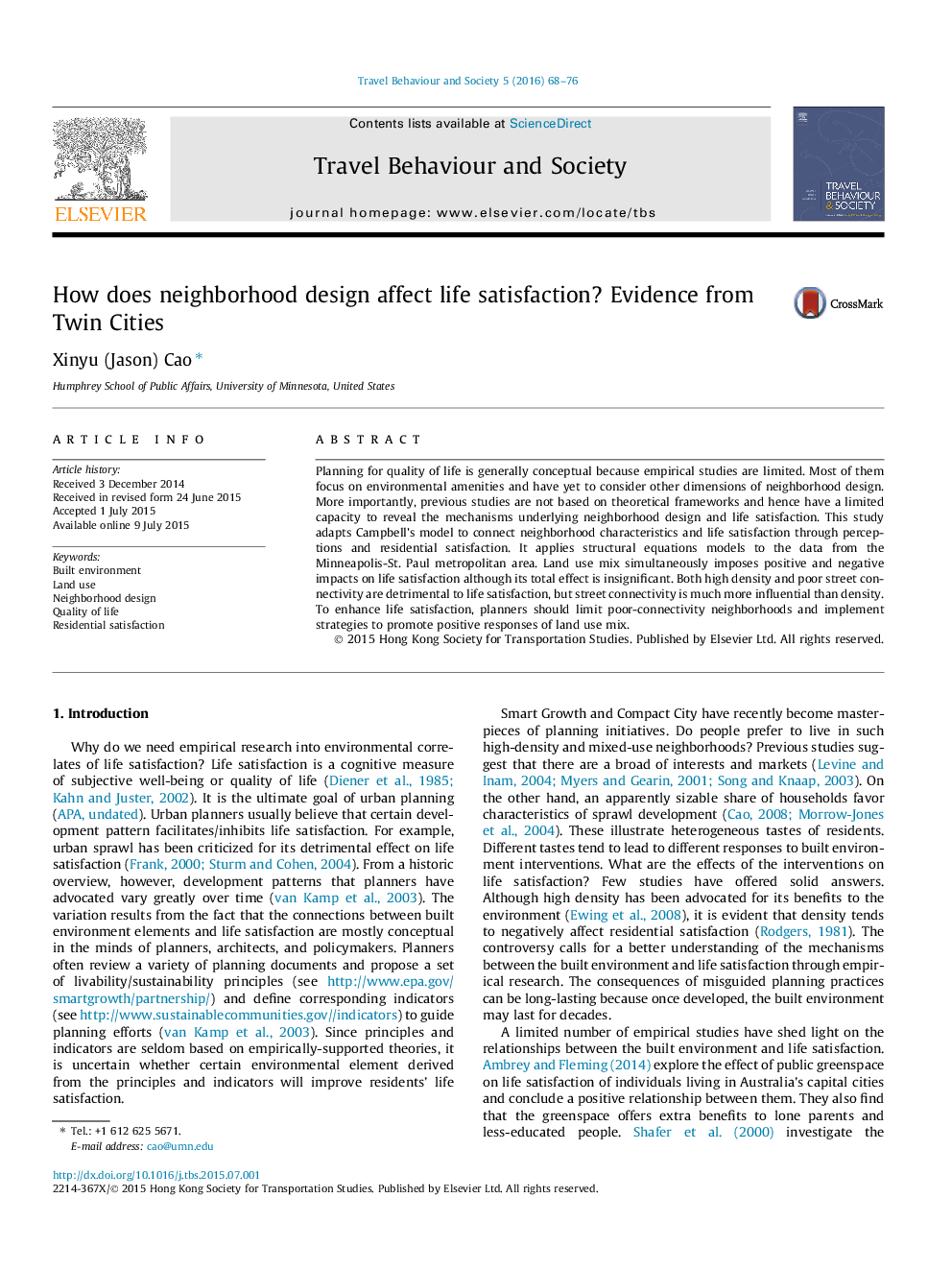| کد مقاله | کد نشریه | سال انتشار | مقاله انگلیسی | نسخه تمام متن |
|---|---|---|---|---|
| 141290 | 162849 | 2016 | 9 صفحه PDF | دانلود رایگان |
Planning for quality of life is generally conceptual because empirical studies are limited. Most of them focus on environmental amenities and have yet to consider other dimensions of neighborhood design. More importantly, previous studies are not based on theoretical frameworks and hence have a limited capacity to reveal the mechanisms underlying neighborhood design and life satisfaction. This study adapts Campbell’s model to connect neighborhood characteristics and life satisfaction through perceptions and residential satisfaction. It applies structural equations models to the data from the Minneapolis-St. Paul metropolitan area. Land use mix simultaneously imposes positive and negative impacts on life satisfaction although its total effect is insignificant. Both high density and poor street connectivity are detrimental to life satisfaction, but street connectivity is much more influential than density. To enhance life satisfaction, planners should limit poor-connectivity neighborhoods and implement strategies to promote positive responses of land use mix.
Journal: Travel Behaviour and Society - Volume 5, September 2016, Pages 68–76
